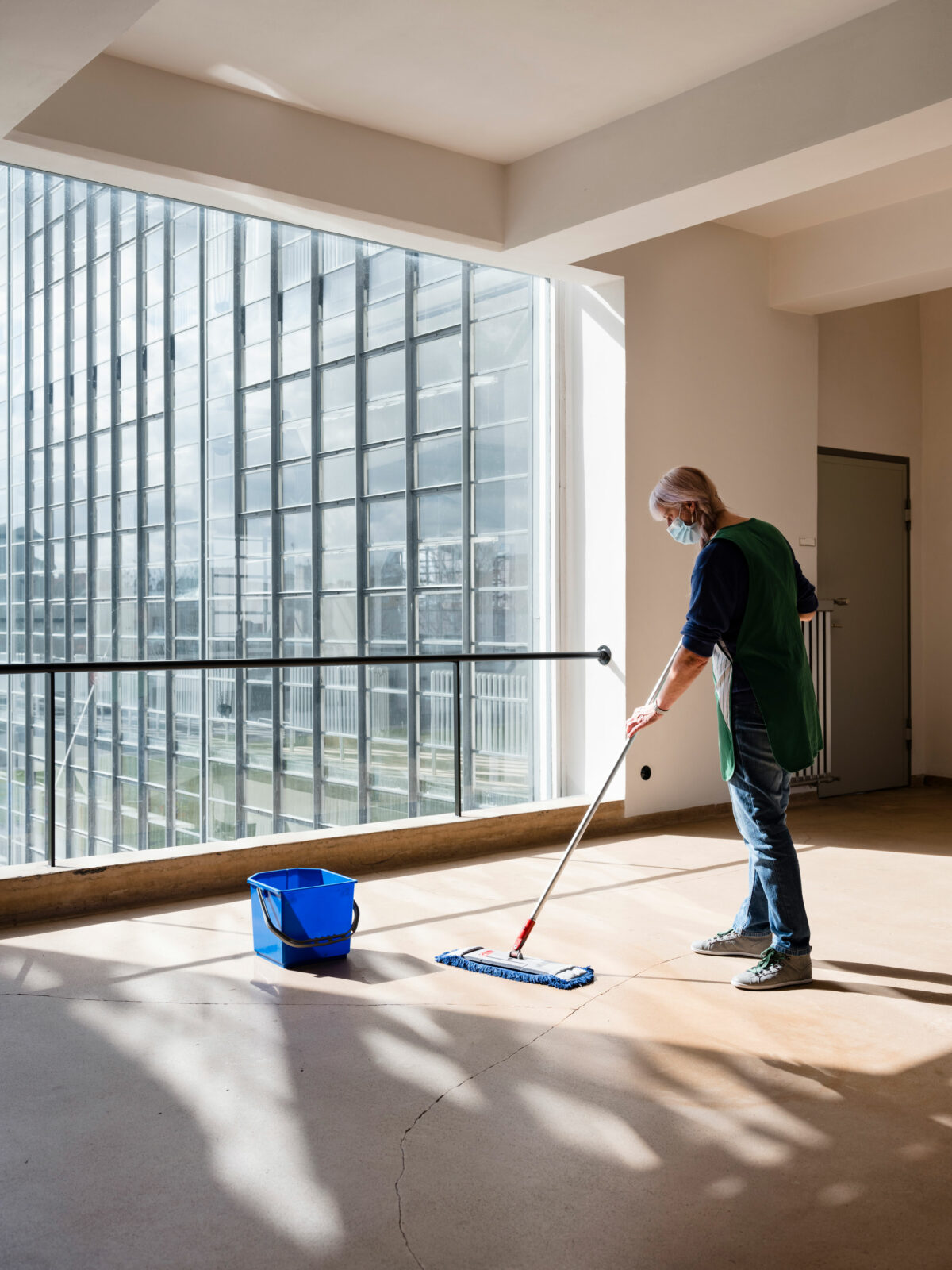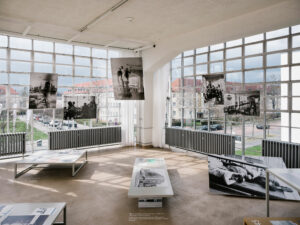
Presentations at Bauhaus
Bauhaus Building
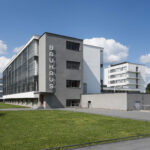
When the Bauhaus moved from Weimar to Dessau, a unique opportunity arose: to build a new school building that would express the ideas of the Bauhauslers in architectural form.
“iron concrete frame with brickwork. stone-iron ceilings on girders, … all windows double rebated profile iron with crystal plate glass … outer shell cement plaster with Keim’s mineral paints”
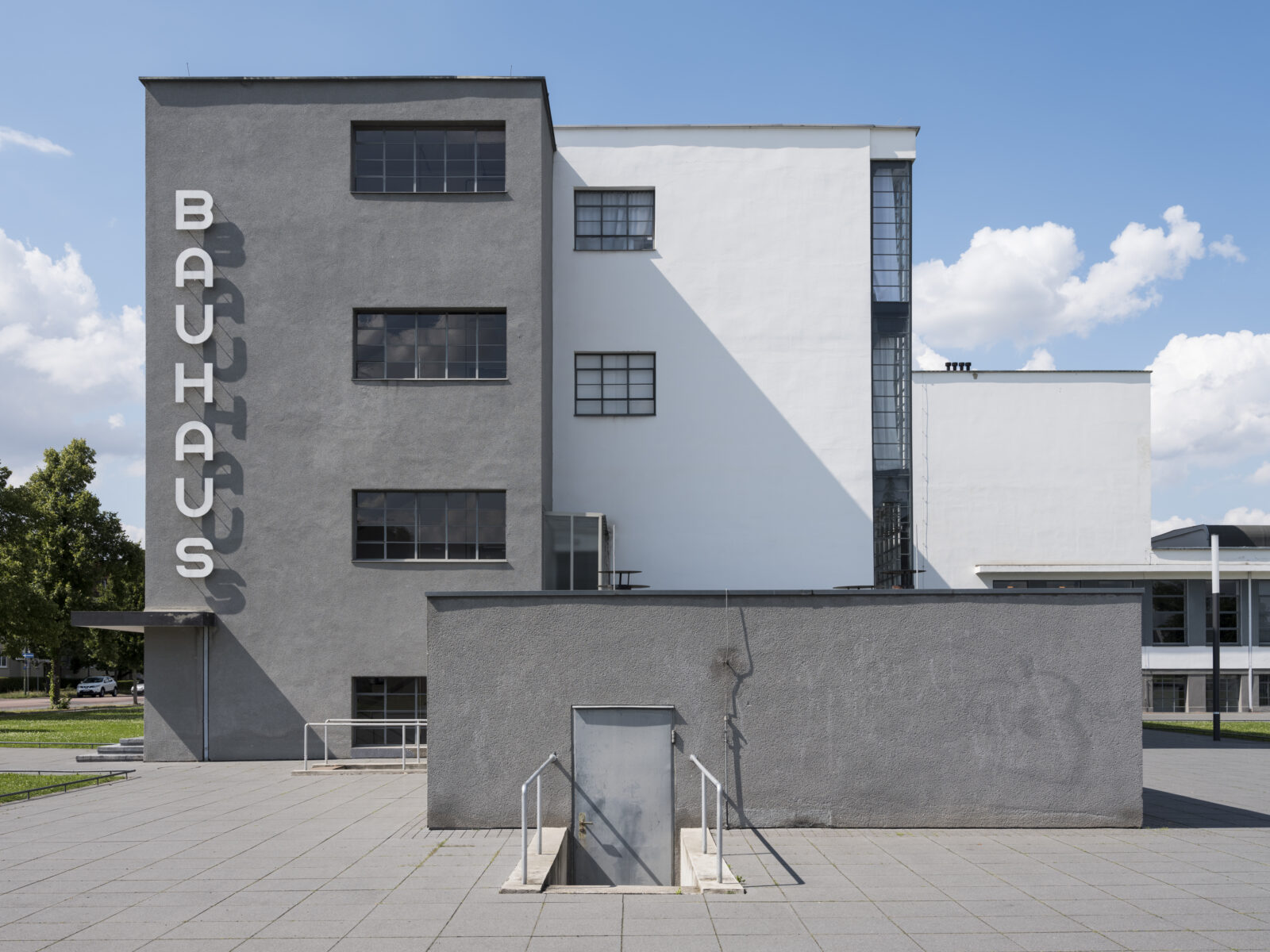
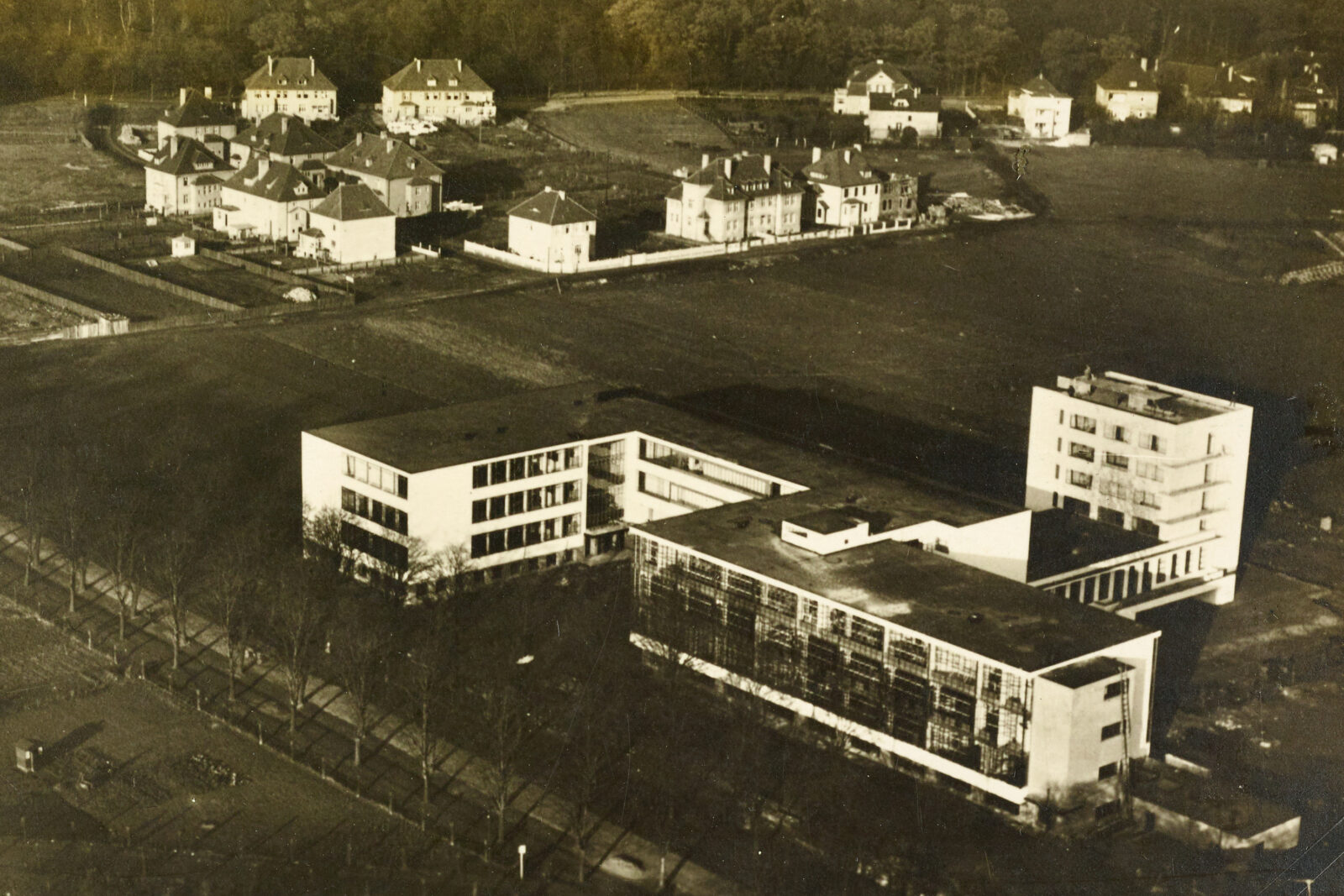
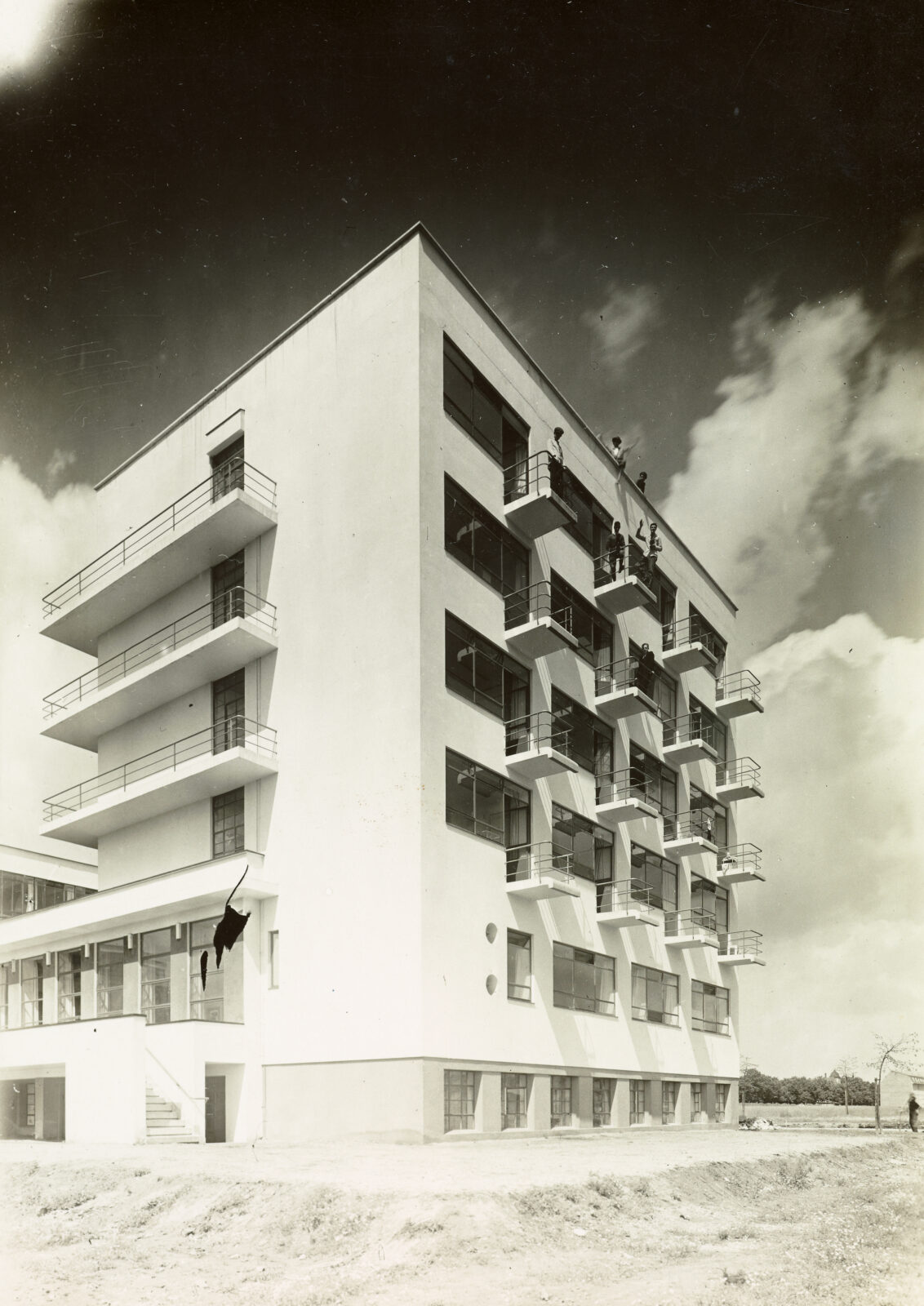
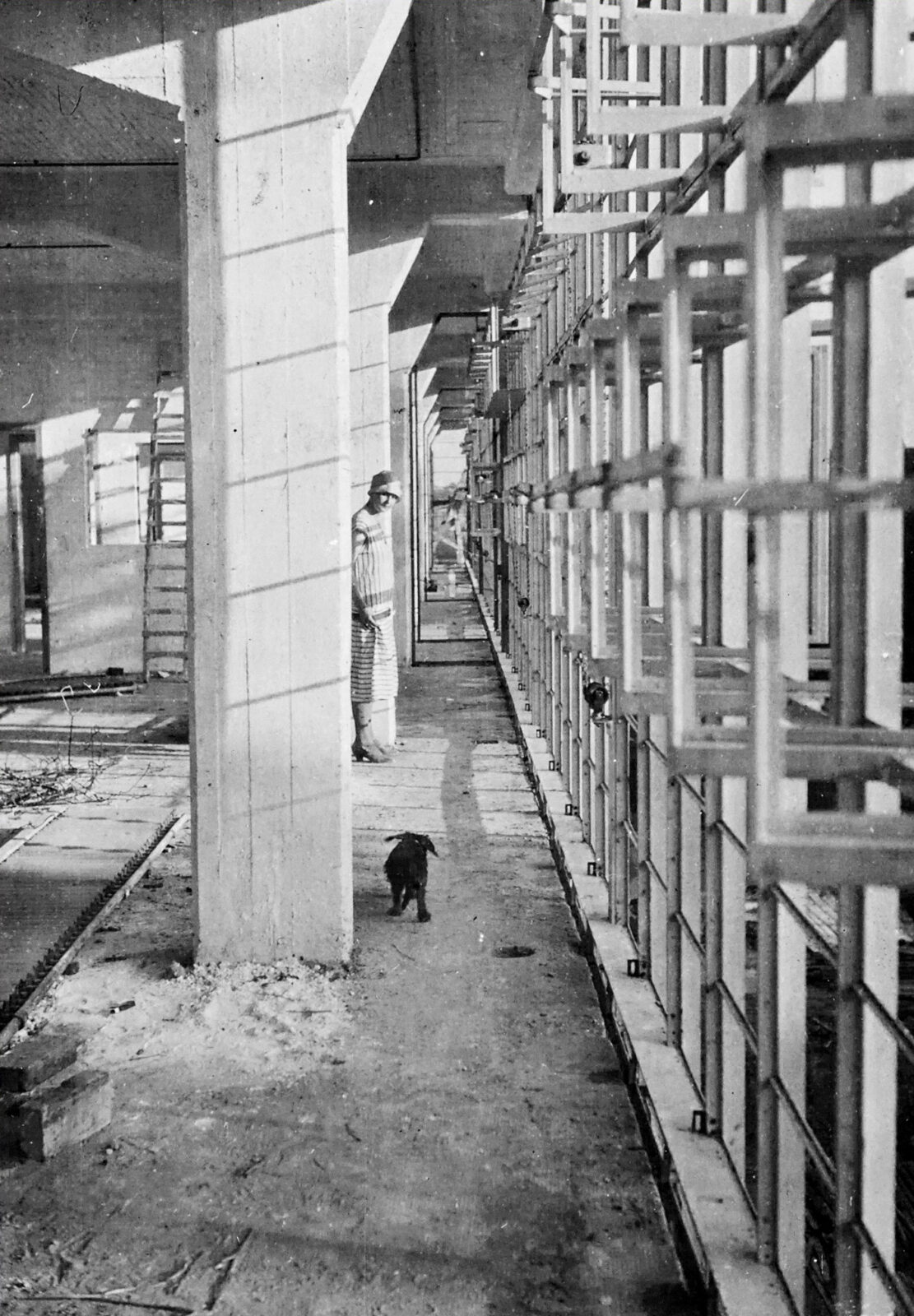
The individual parts of the Bauhaus Building, each with its own separate function, vary in size and height. A two-storey bridge, which served as the administrative headquarters, connects the glazed three-storey workshop wing with the north wing (vocational technical school). The five-storey studio building is accessed via an adjoining one-storey segment, the so-called “festive area” with vestibule (the entrance hall), the auditorium, and the canteen. The studio building (also known as the Preller House) contained 28 living units for students and young masters, all 24 square metres in size. Today, visitors can book to stay overnight in this part of the building.
Because of the irregular arrangement of the building elements, the design of the Bauhaus Building in its entirety can only be grasped fully by walking around the building. There is no central view.
It was particularly the steel and glass façade of the workshop wing that marked the beginnings of modern architecture in Dessau. Thanks to innovative building materials and construction techniques, the steel and glass façade could be drawn around the building like a curtain. Up to the present day, the glass surfaces permit a view of the workshop rooms from the outside; the structure of the building is visible. From the inside, there are spectacular views of the surrounding landscape. Gropius chose high-quality crystal mirror glass to prevent distortion, which at the same time allows the surroundings to be reflected.
As the Bauhaus did not have its own architectural department until 1927, the planning and realisation of the new building was undertaken by Walter Gropius’ private office – with major participation on the part of his associates Carl Fieger, Ernst Neufert, Otto Meyer-Ottens, and Bernhard Sturtzkopf. They worked mostly with regional firms. On 4 December 1926, after approximately one year of construction, the building was opened.
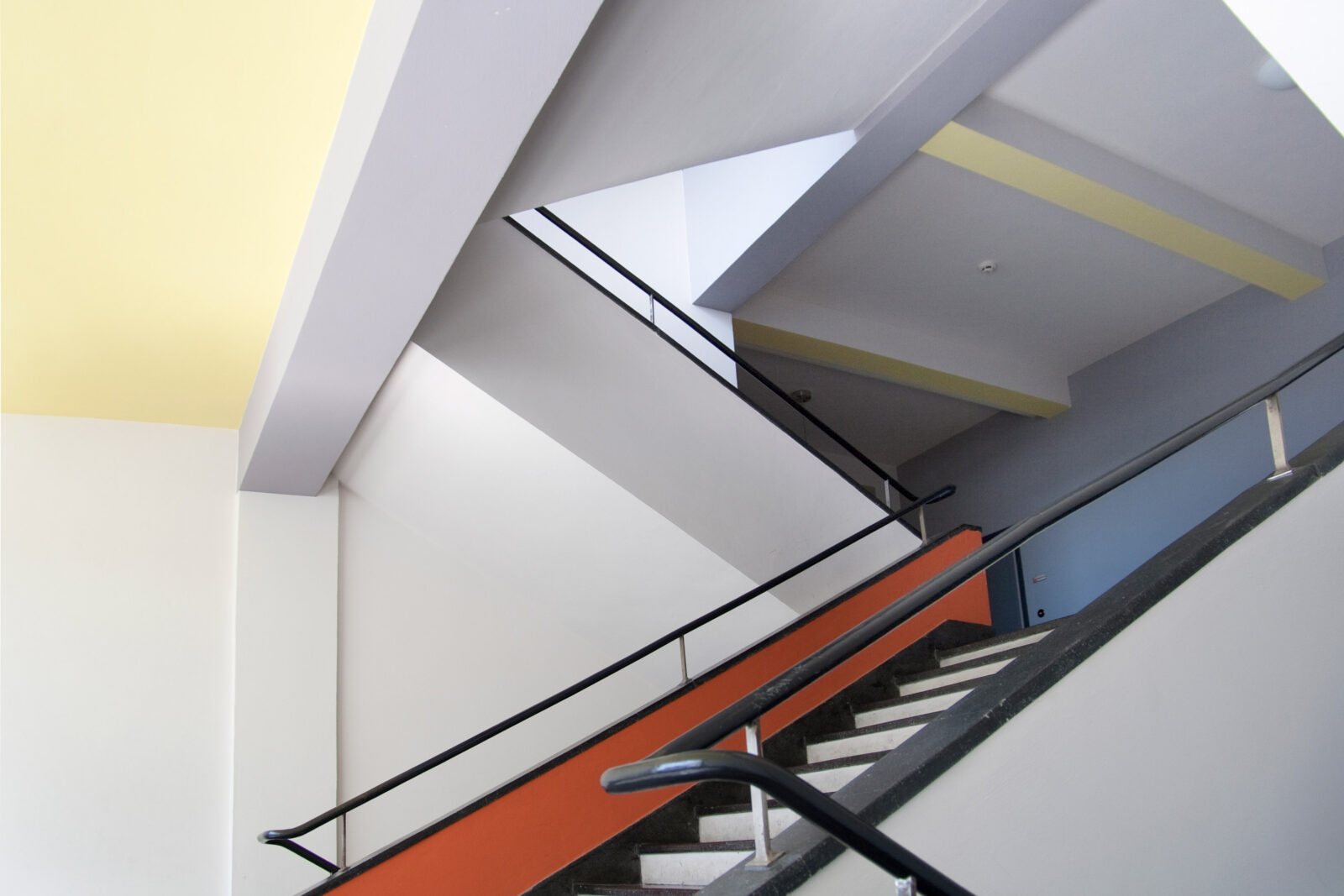
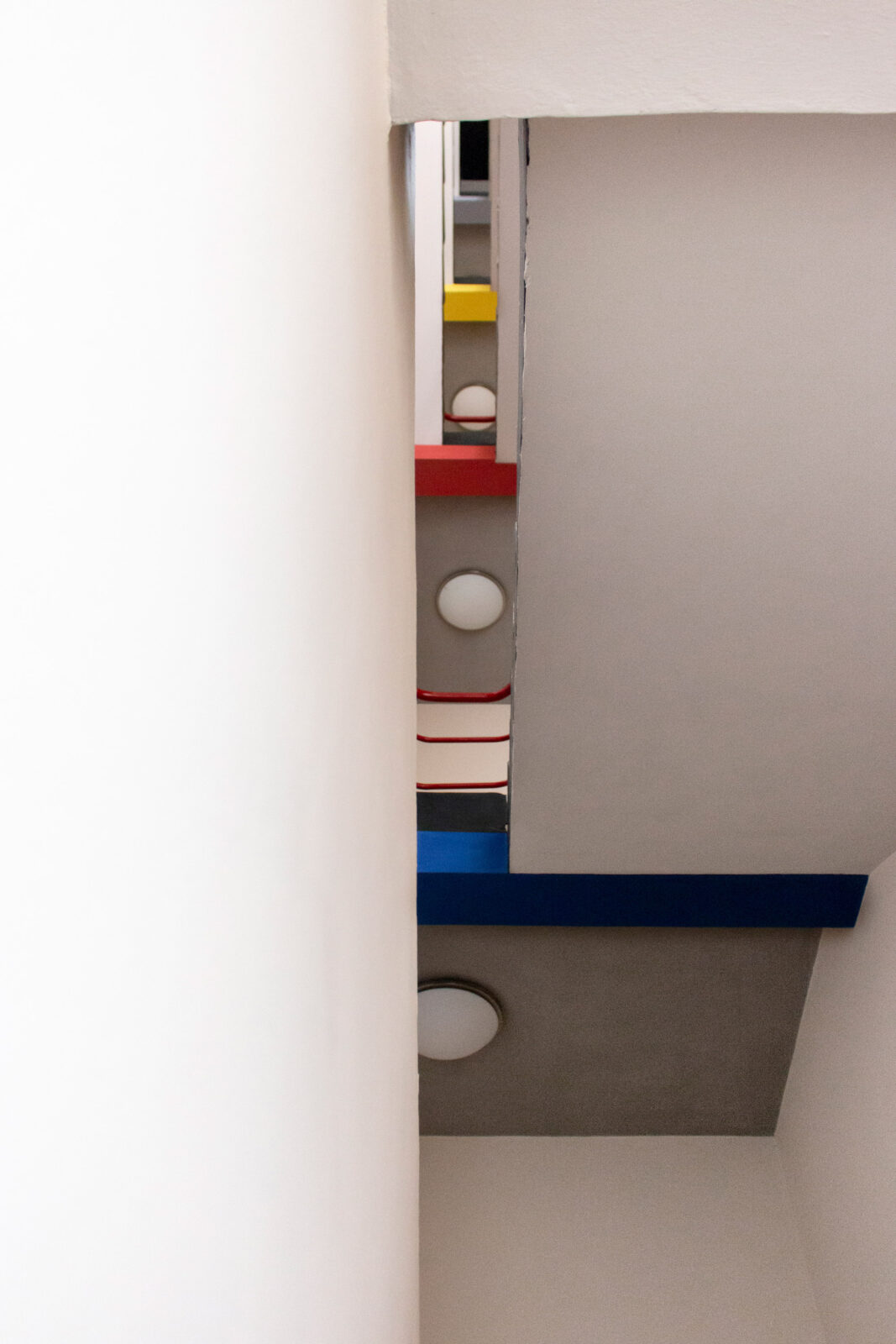
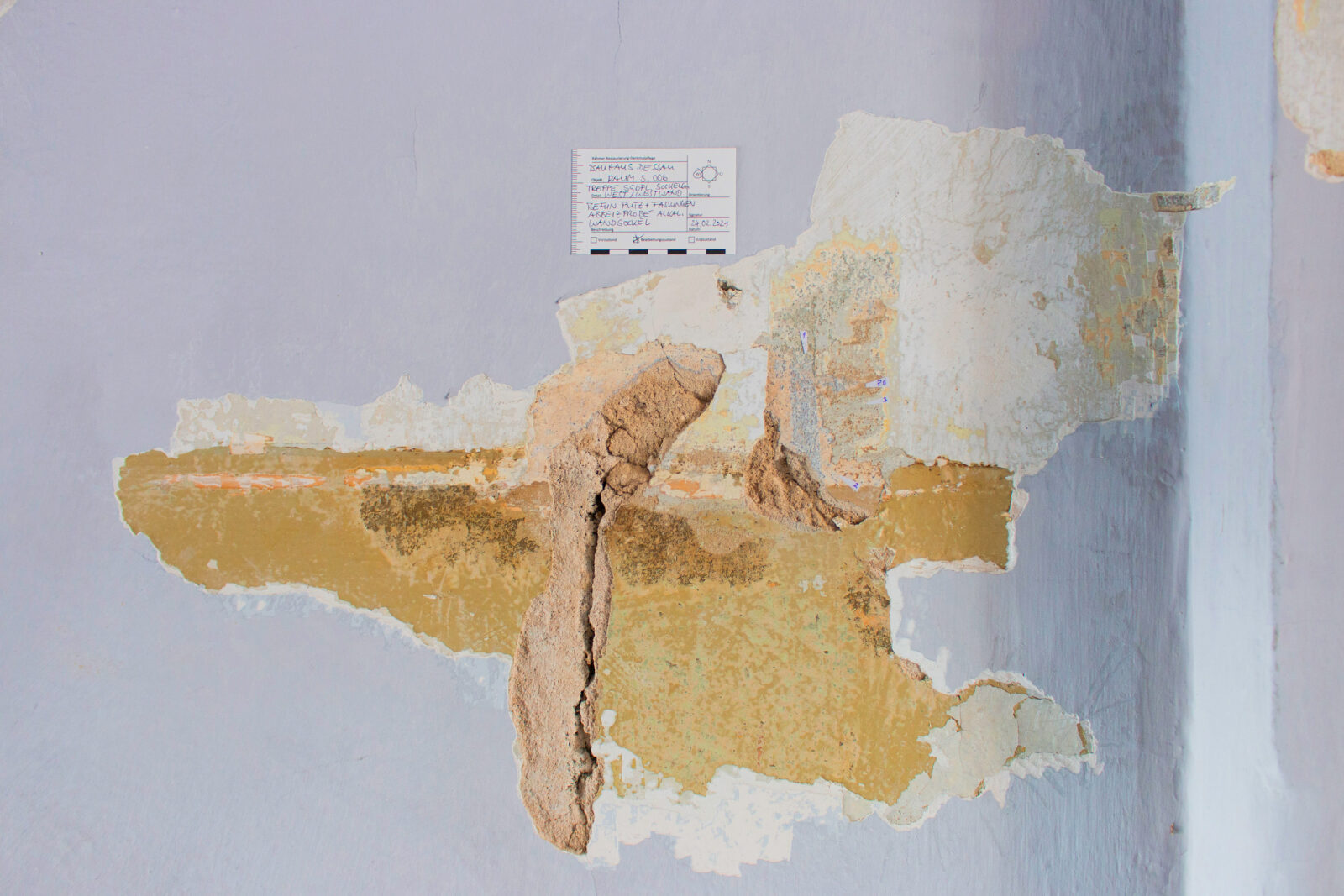
The colour scheme, developed by Hinnerk Scheper in his mural painting workshop, was an important component of the building’s concept. It provides orientation within the building, underlines its structure in some places or overrides it in others, and allows new colour spaces to emerge. The colour effect is accentuated through the varied materials and structure of the surfaces.
The colour scheme in the Bauhaus Building as it stands today corresponds as far as possible to the original design. The reconstruction is based on intensive research on colours and surfaces carried out by the Bauhaus Dessau Foundation between 1996 and 2006.

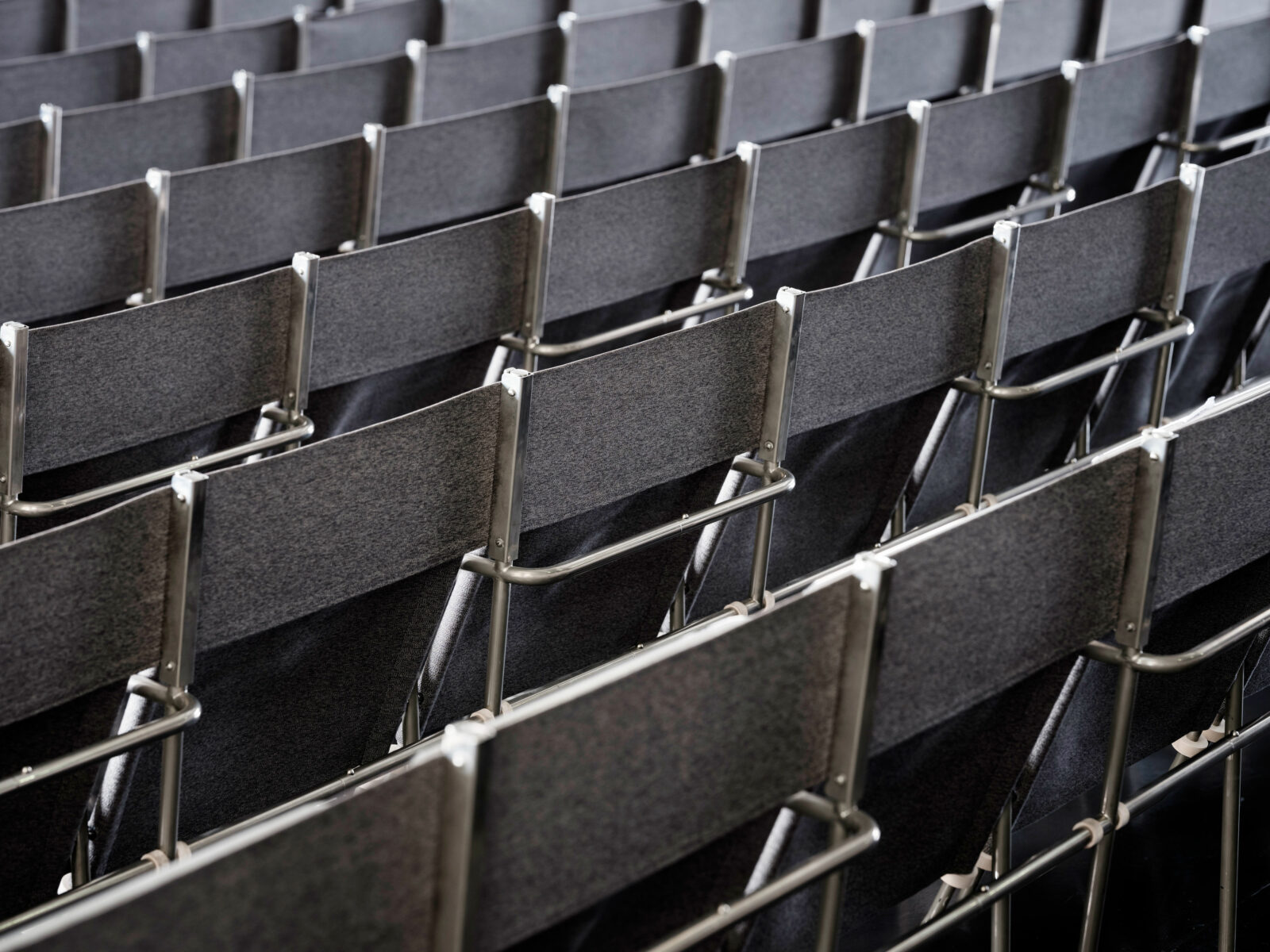

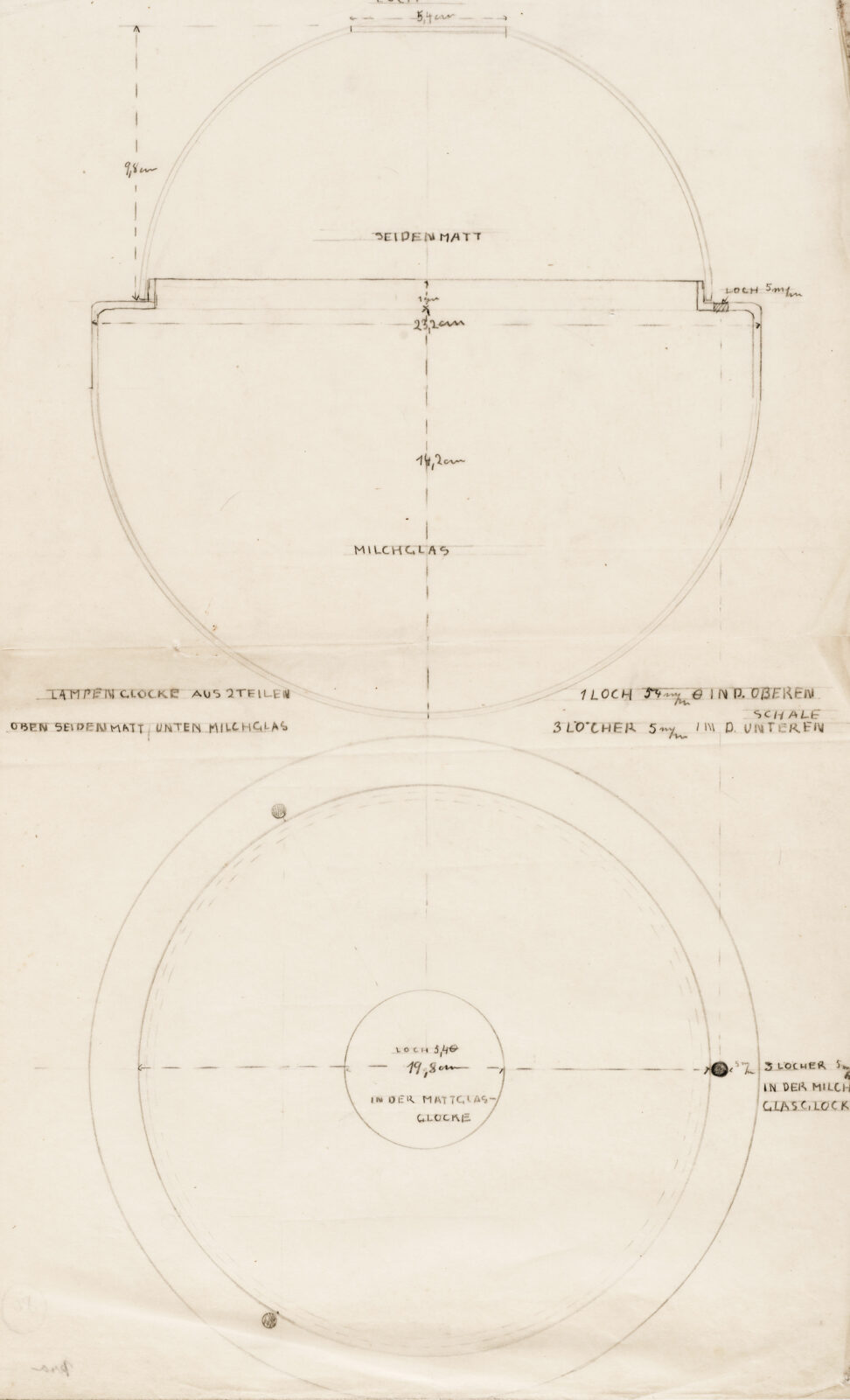
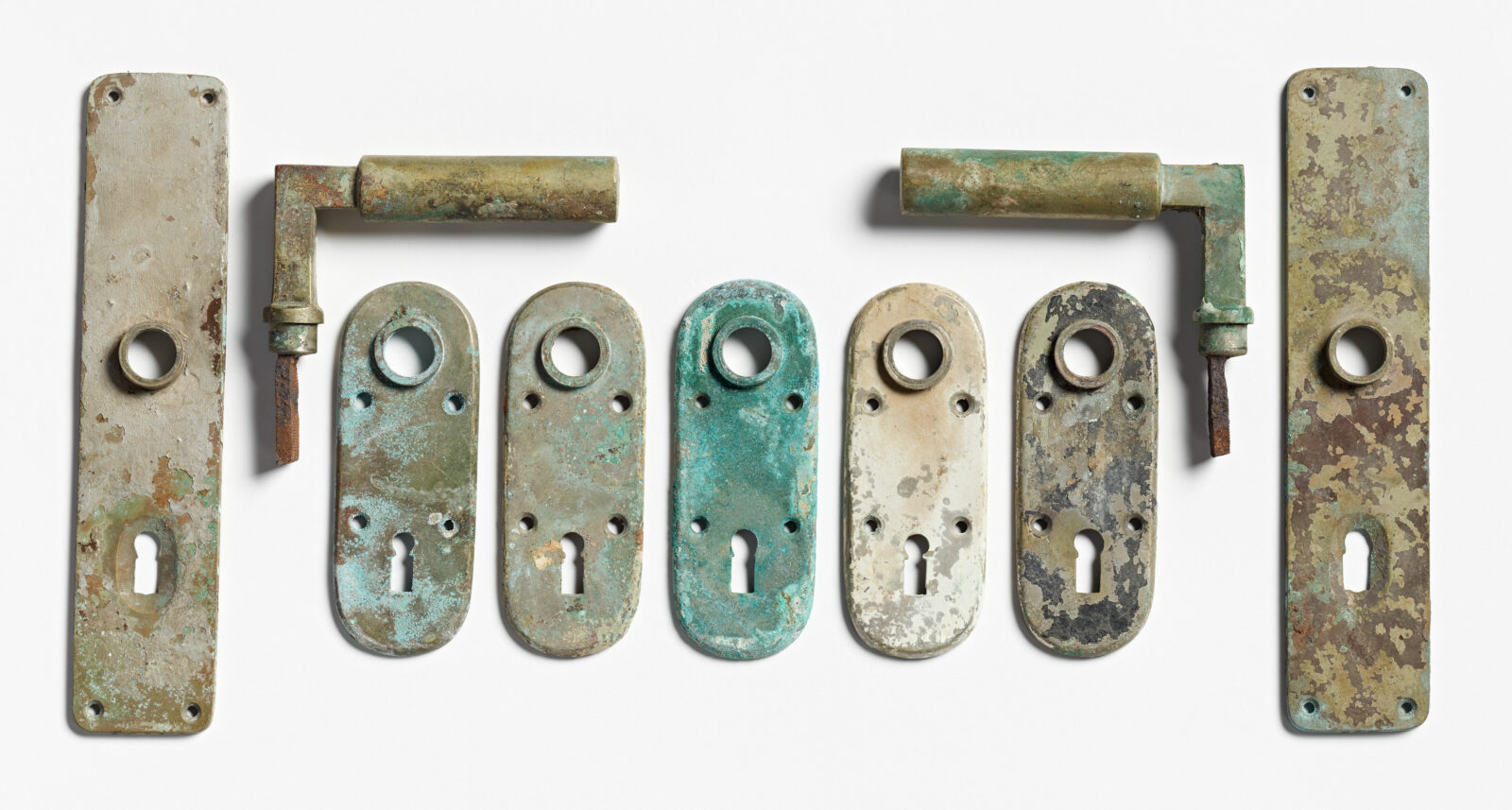
The interior design of the Bauhaus Building was created in the school’s own workshops. In addition to their functional purpose, the furnishings of the school were to reflect the achievements and innovation of the Bauhaus and thus help to establish cooperation projects with industrial partners. The auditorium, dining room, director’s office, and student studios were furnished with tubular steel furniture by Marcel Breuer. Hinnerk Scheper’s workshop for mural painting was responsible for the interior design. In the metal workshop, under the supervision of László Moholy-Nagy, the lamps were designed by Marianne Brandt, Hans Przyrembel, and Max Krajewsky. Walter Gropius himself designed the door handles.
Marianne Brandt worked closely with industrial partners in Dessau from the design stage to completion. Over 100 of her lamp designs were industrially produced, and they sold extremely well.
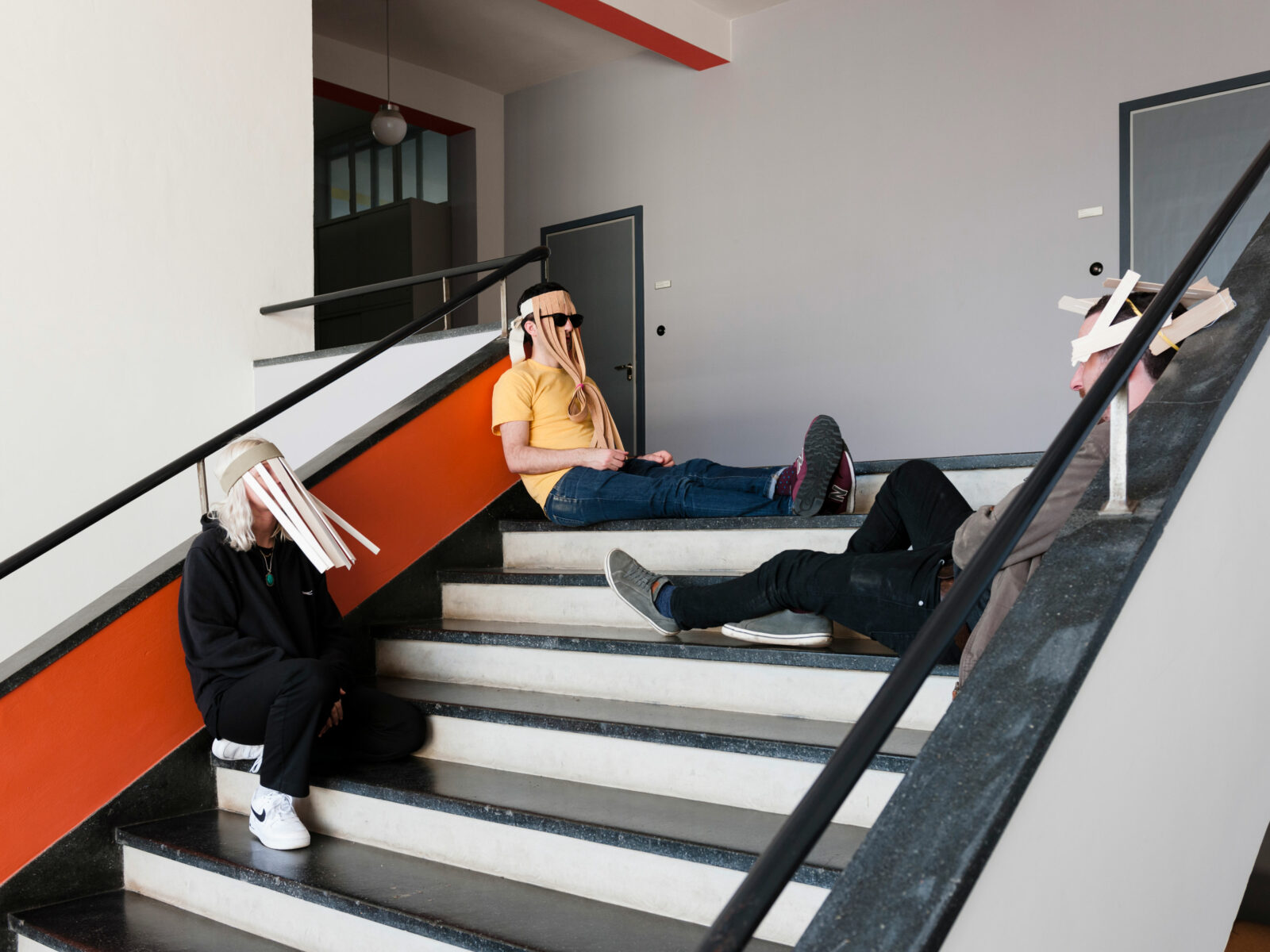
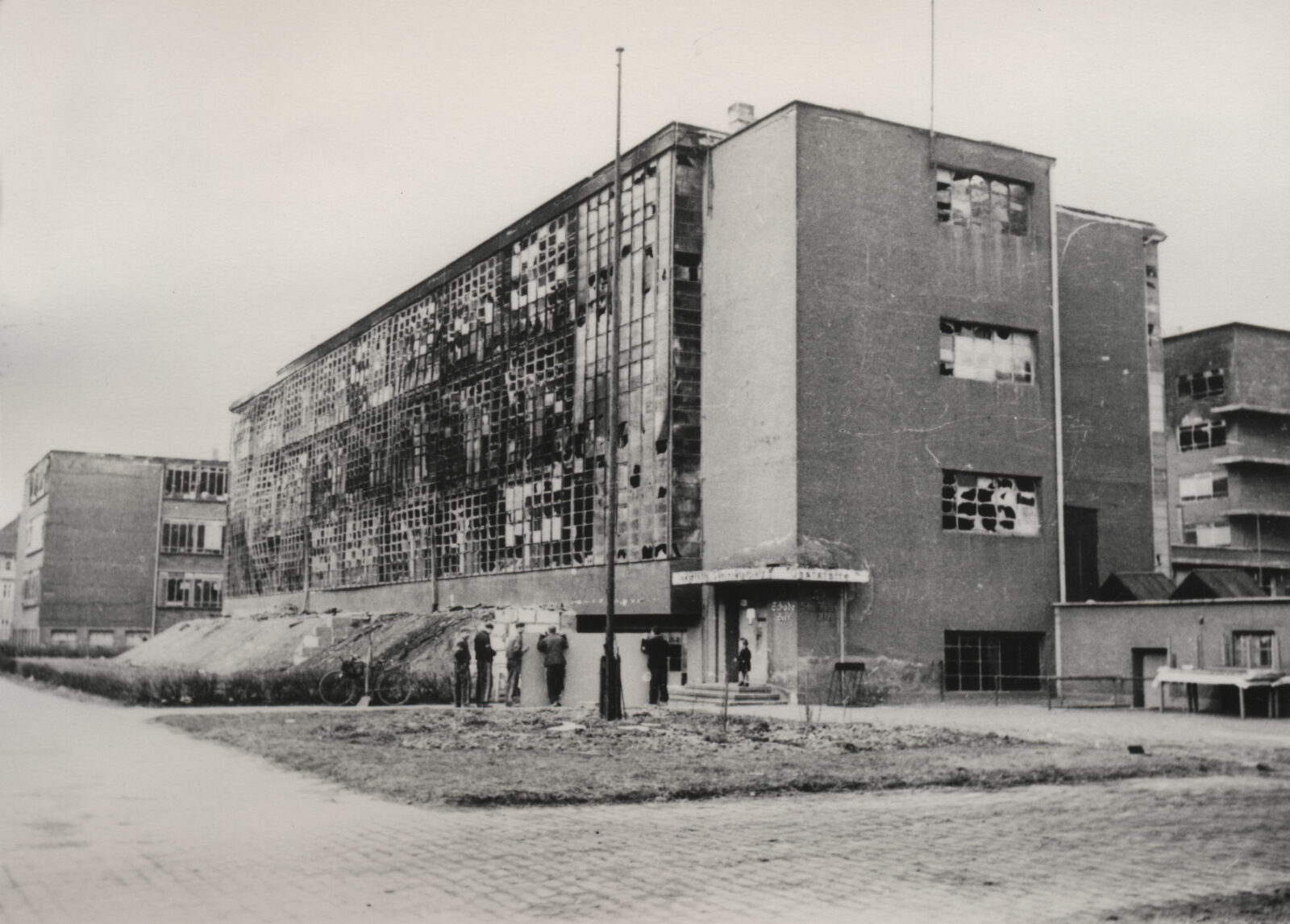
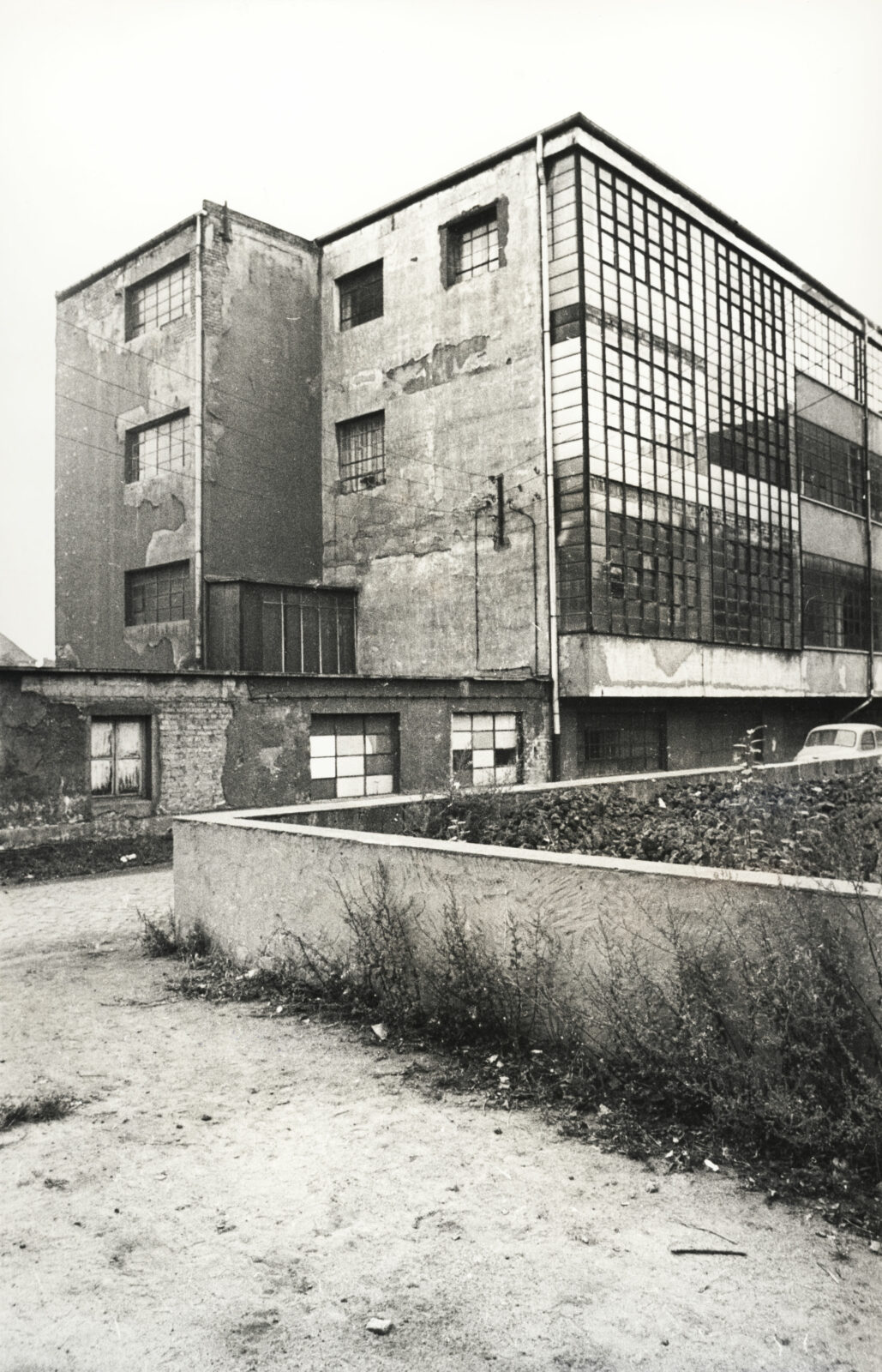
After the Bauhaus was closed in 1932 by the city of Dessau, at the request of the Nazi Party, the building was not demolished as originally planned, but adapted for further use. Among other things, it functioned as a school for regional female labour and a school for civil servants from the Magdeburg region.
In March 1945, the building was hit during a bombing attack on Dessau. The delicate steel and glass façade was so damaged that most of it had to be removed completely. After 1945, the building was repaired in a makeshift manner. The spaces between the floors were filled with thin brick walls, and wooden windows were installed. The workshop wing was repurposed to accommodate workshops for trainees in the building trade, a construction site for bricklaying and carpentry apprentices, and a gymnastics hall.

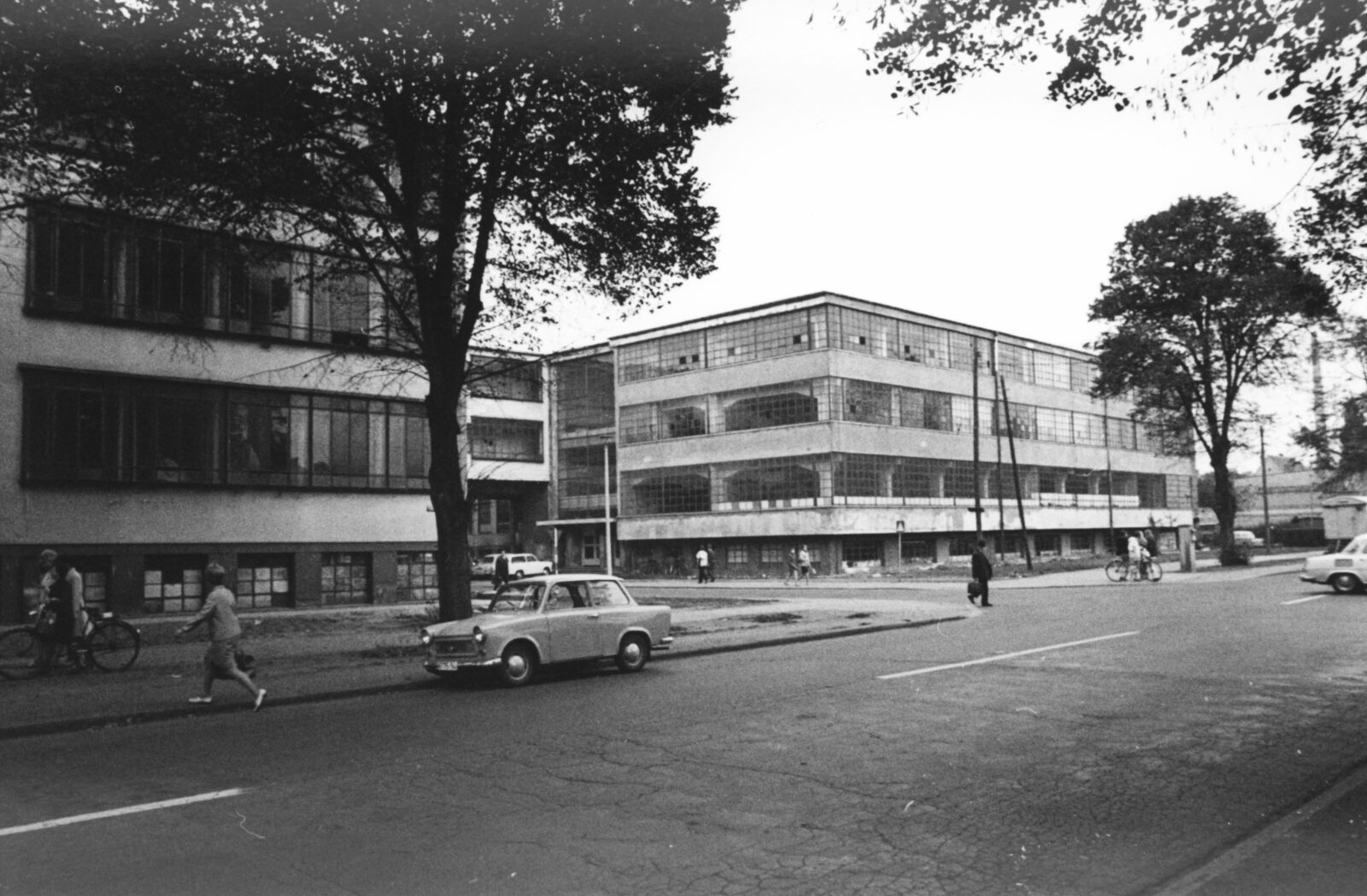

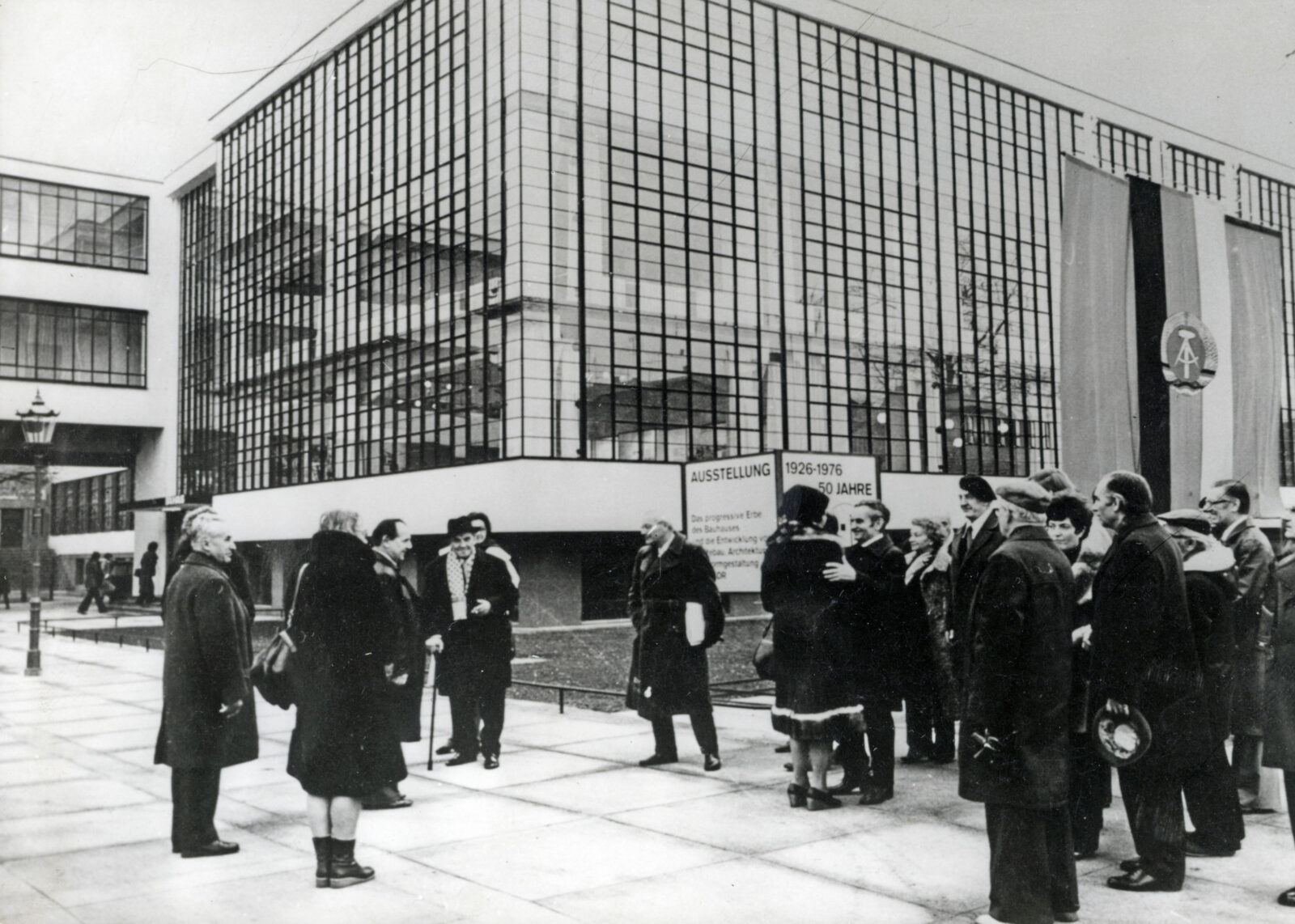
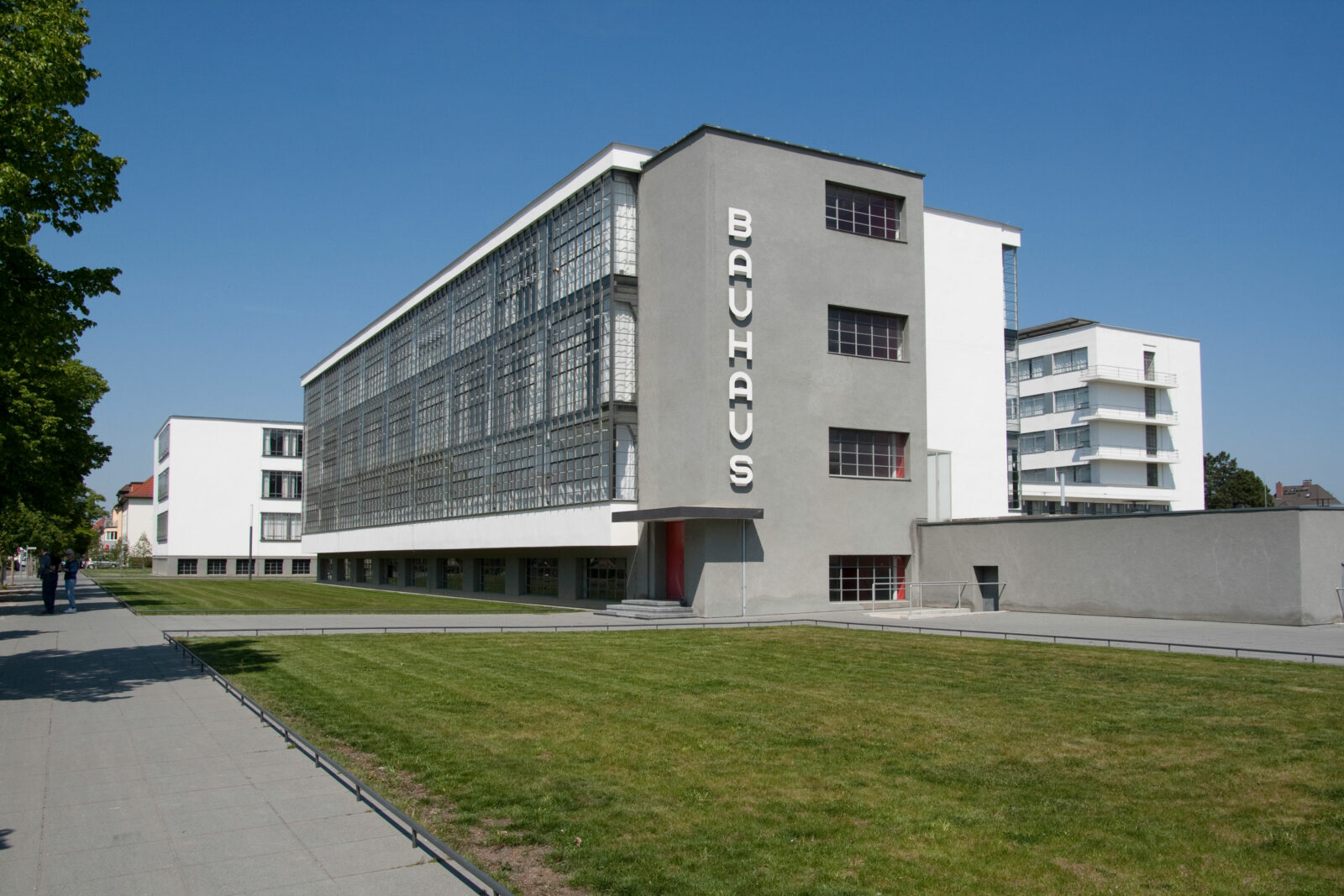
Between 1955 and 1962, in the year 1976, and during the overall refurbishment from 1996 to 2006, changes were made to the substance of the building. In 1964, the Bauhaus Building was added to the “List 1 of listed buildings of the German Democratic Republic”. On the 50th anniversary of the opening of the Bauhaus in Dessau in 1976, the façade was also restored to its original appearance in accordance with the GDR’s understanding of monument preservation. The steel and glass façade that had been destroyed in the war was replaced with an aluminium and glass construction. In 1996, the Bauhaus Building was added to the UNESCO World Heritage List. It received the status of a site of outstanding value to humanity.
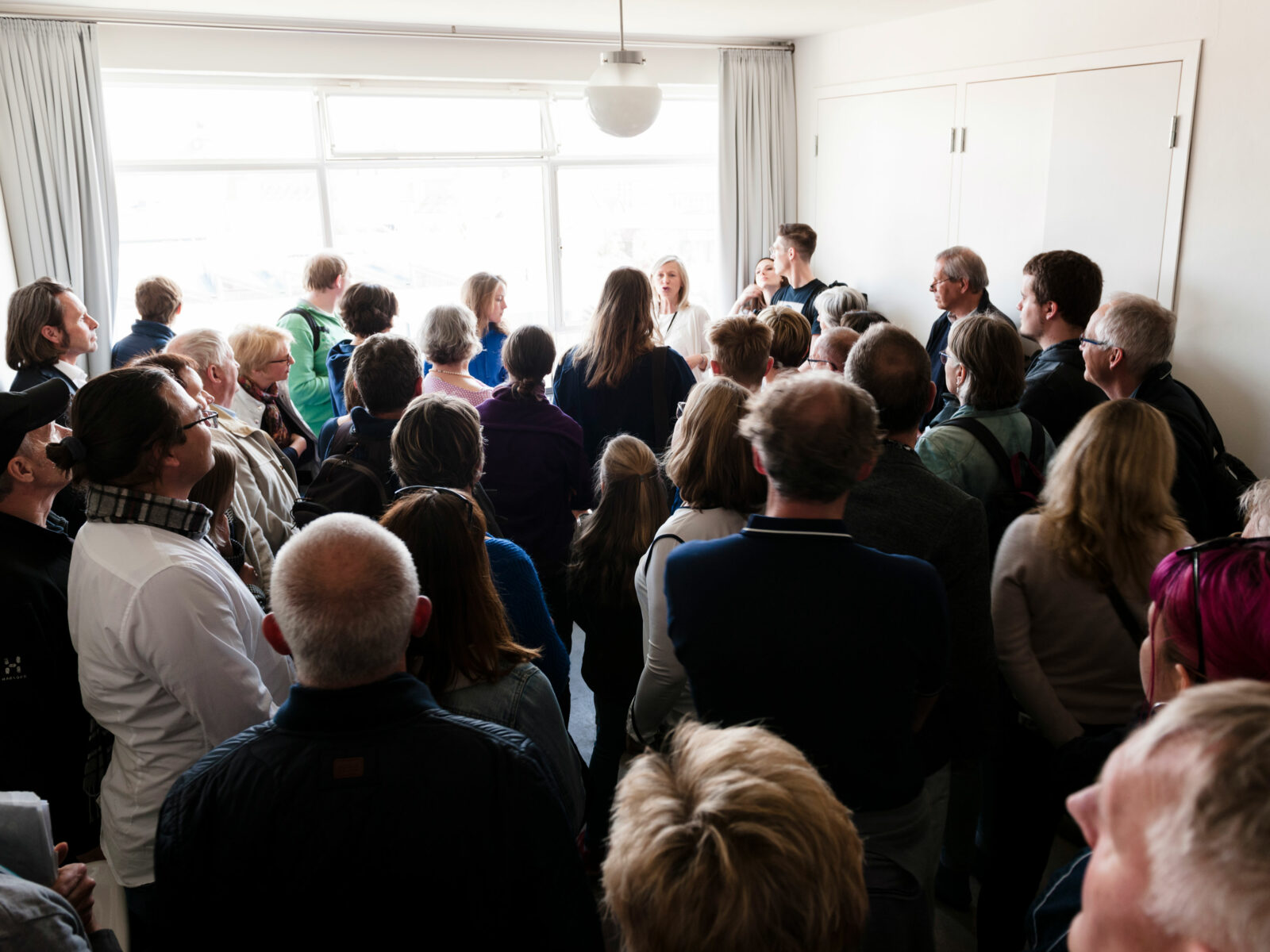
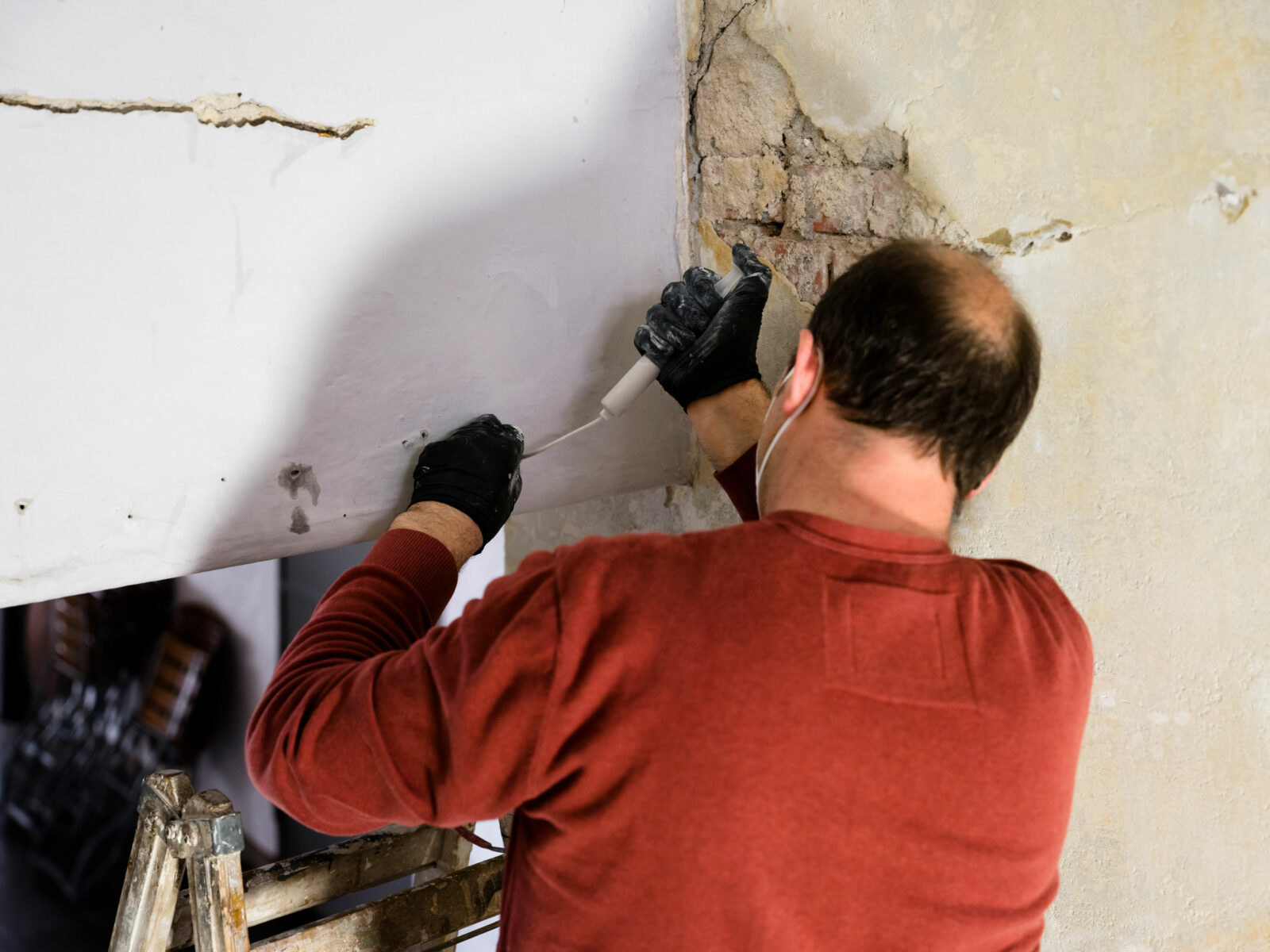

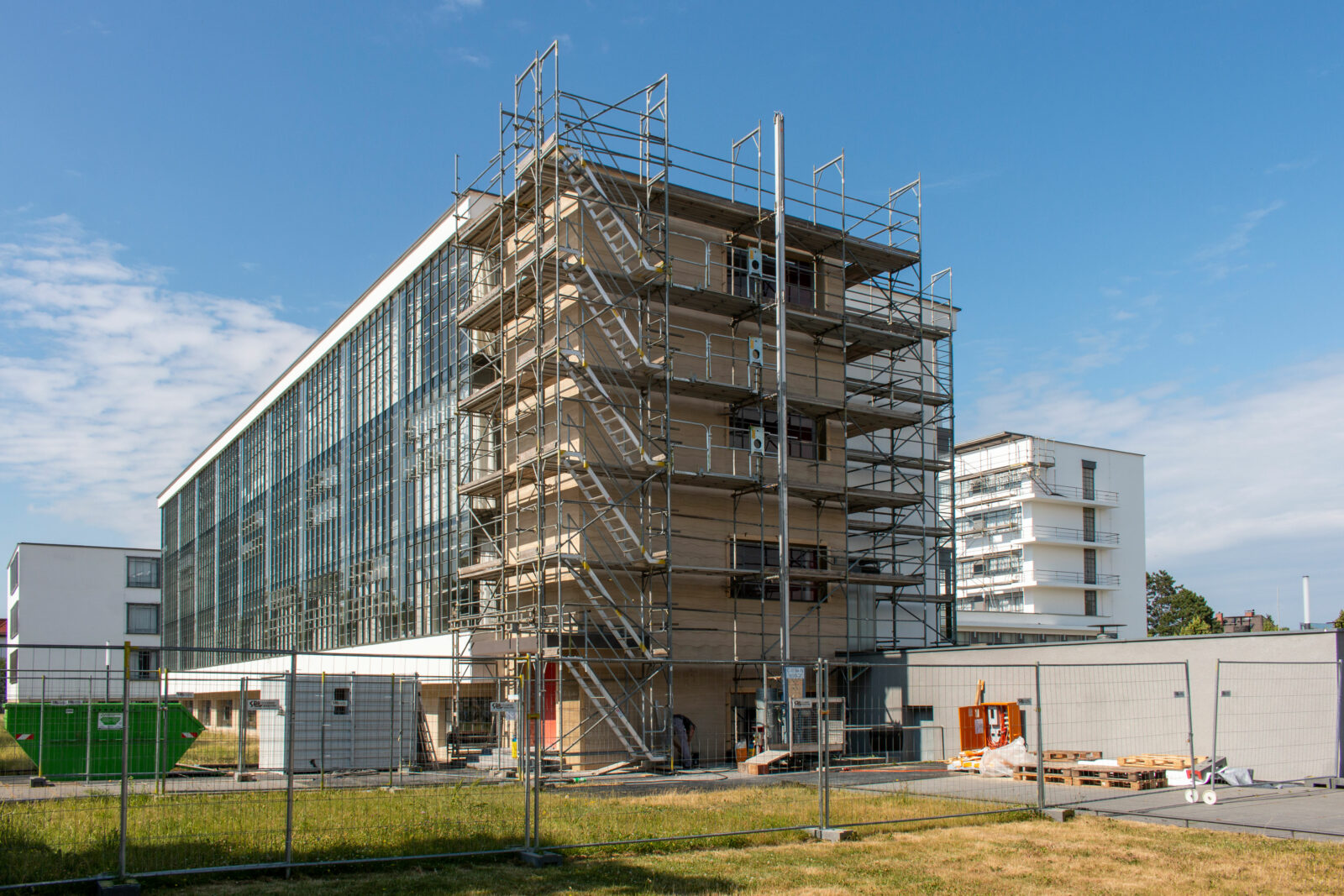
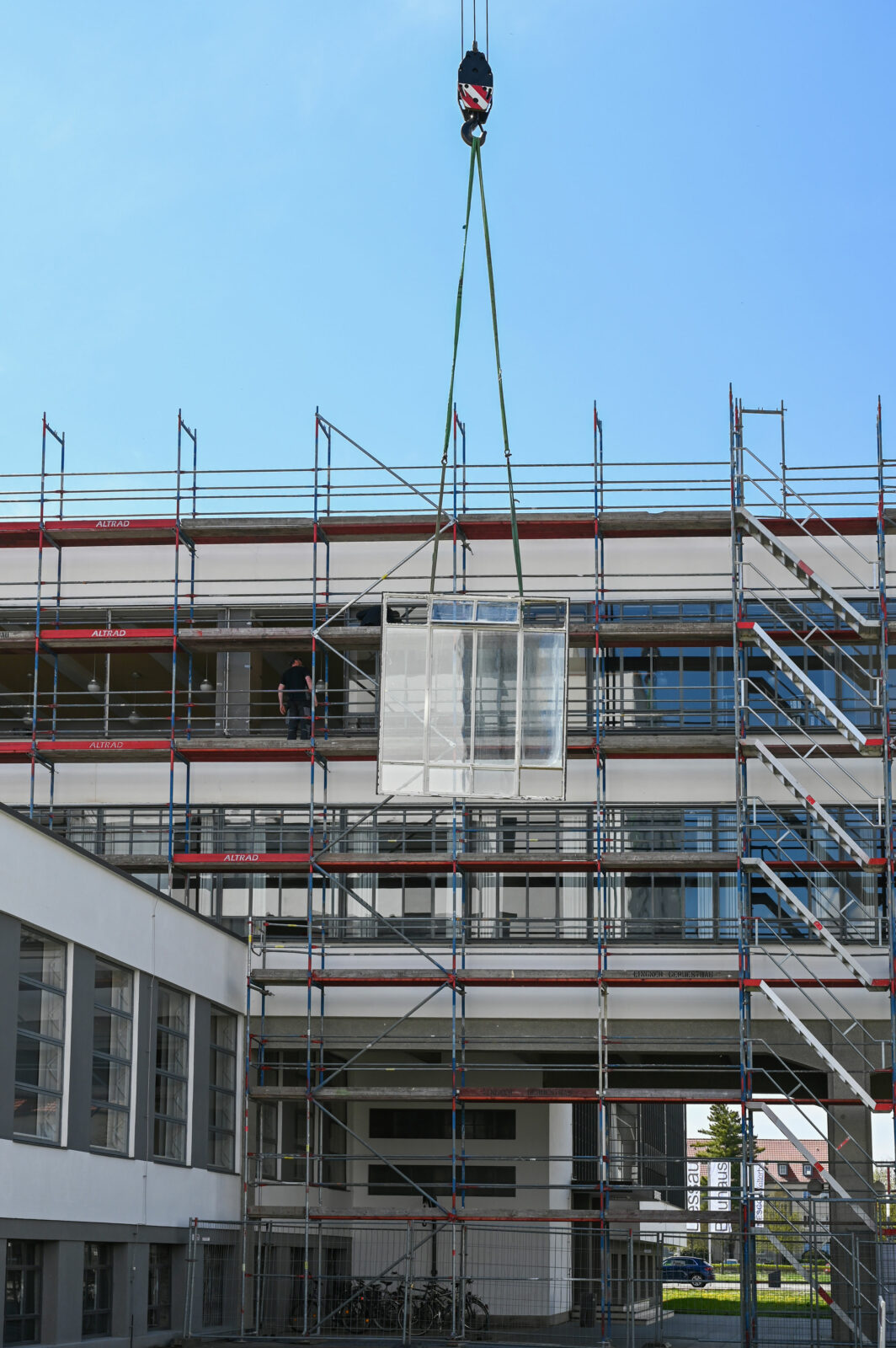

A building where people work, and which is visited by hundreds of thousands of guests and specialist audiences every year, is bound to show considerable signs of wear and tear. Unfavourable weather conditions also take their toll on the building’s substance. The effects of climate change demand a special approach to the protection of the building. Maintenance measures are carried out continuously, and scientific findings have to be constantly reviewed and updated. The history of the redevelopment itself is of great interest in this respect.
Since 2020, the glass façade has been monitored in a long-term research project. Climate data is collected, and a continual analysis is made of any cracks and movements in the supporting structure.
